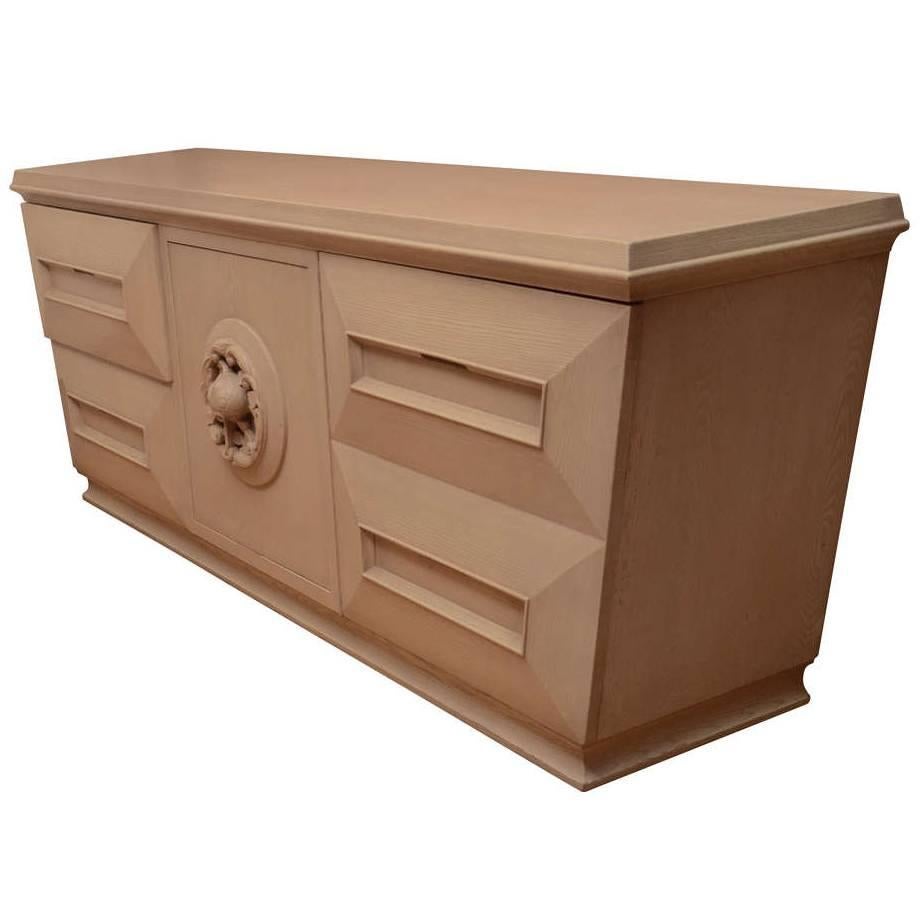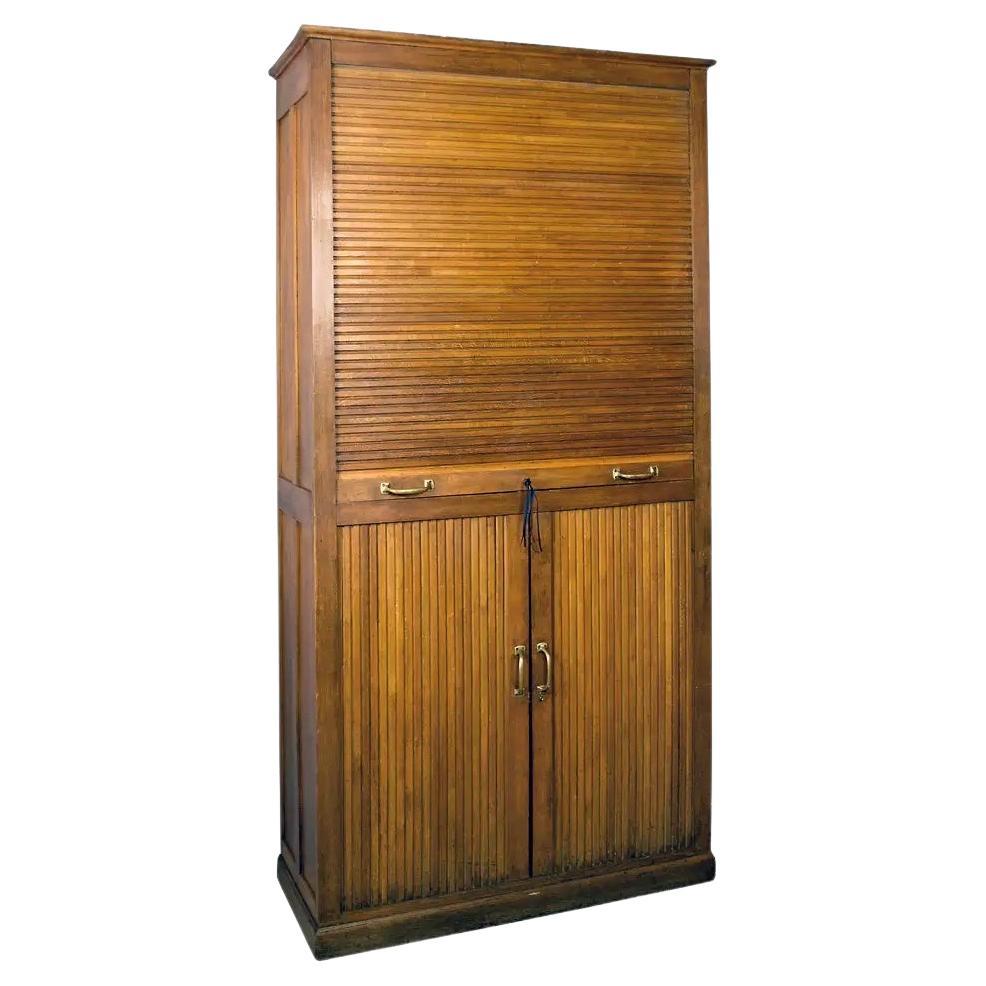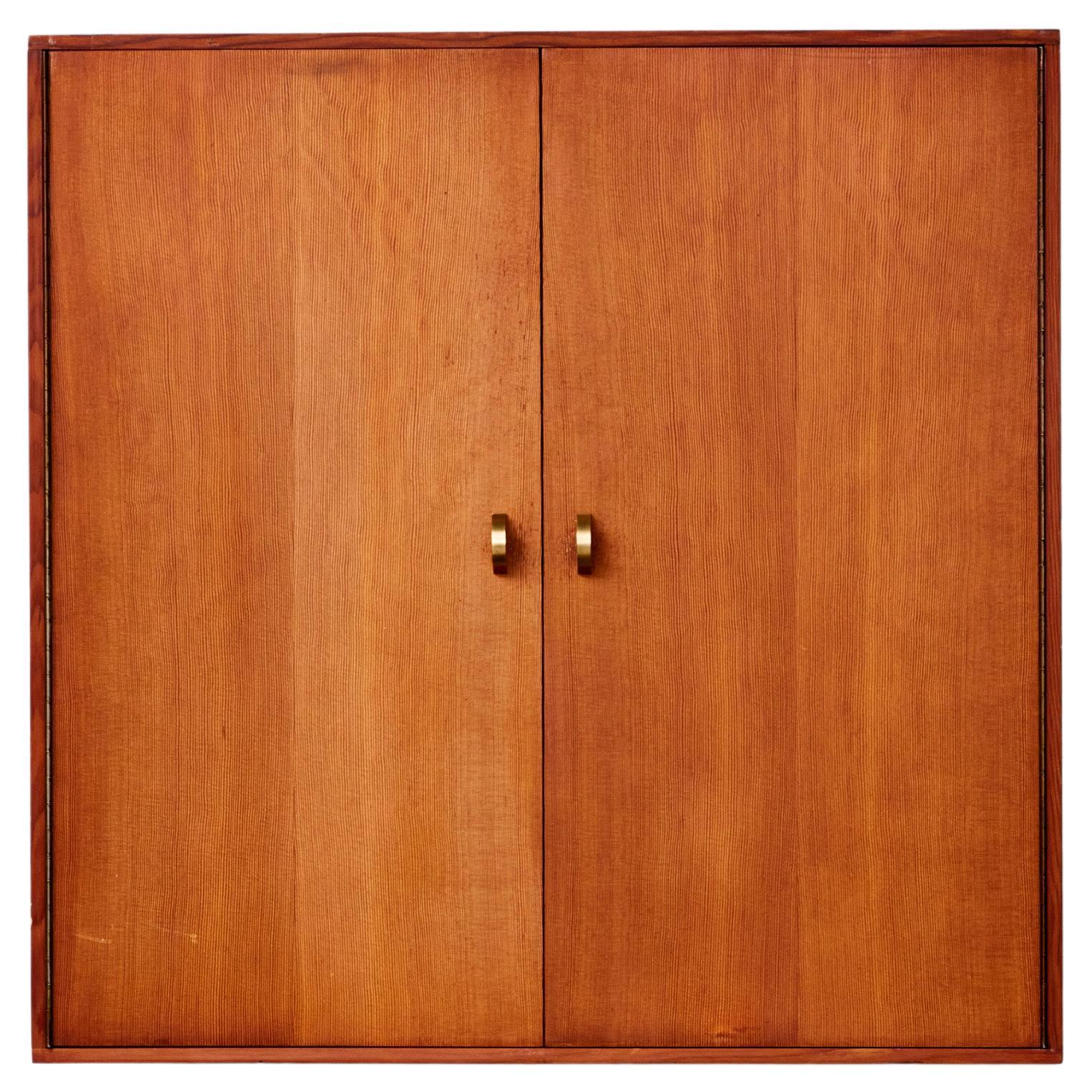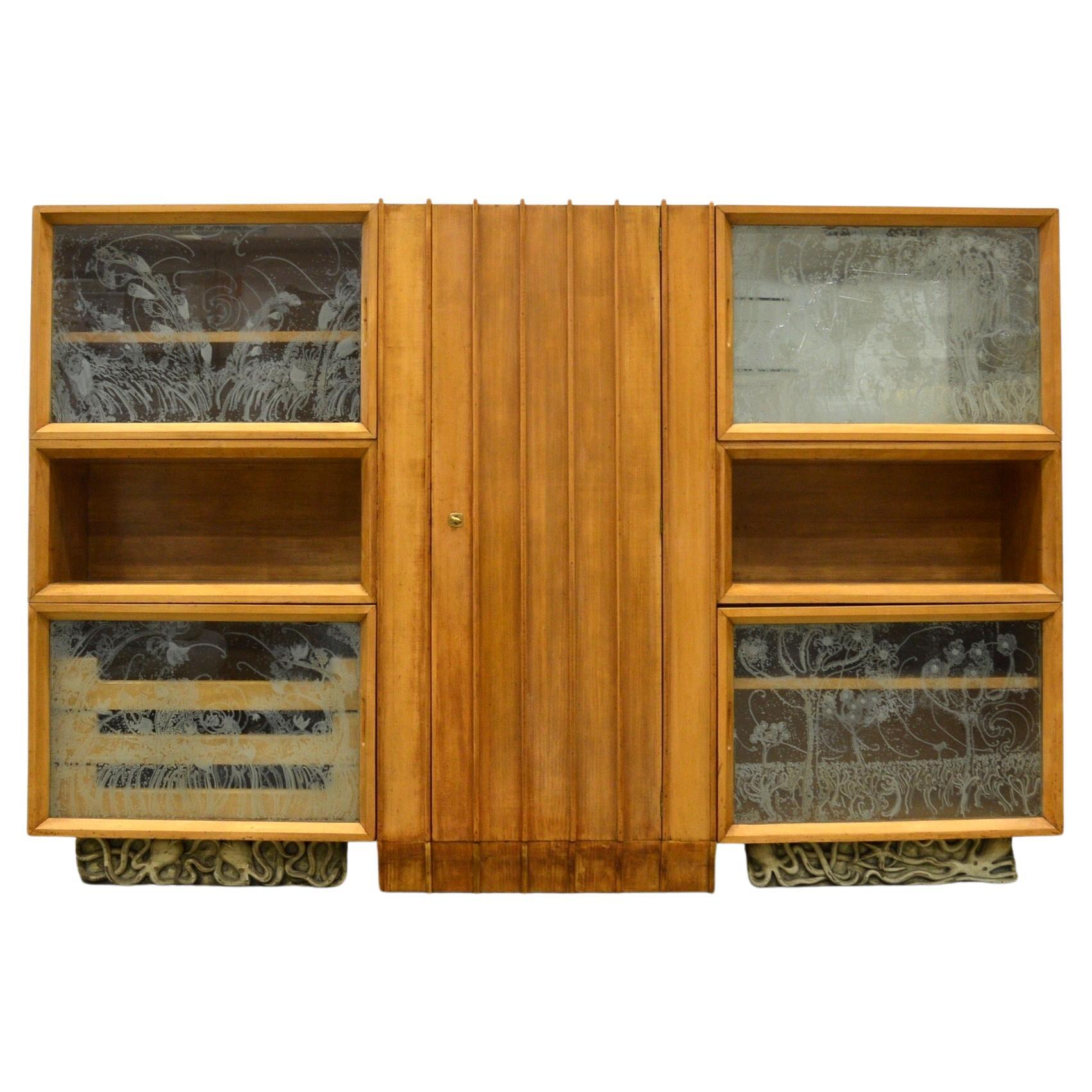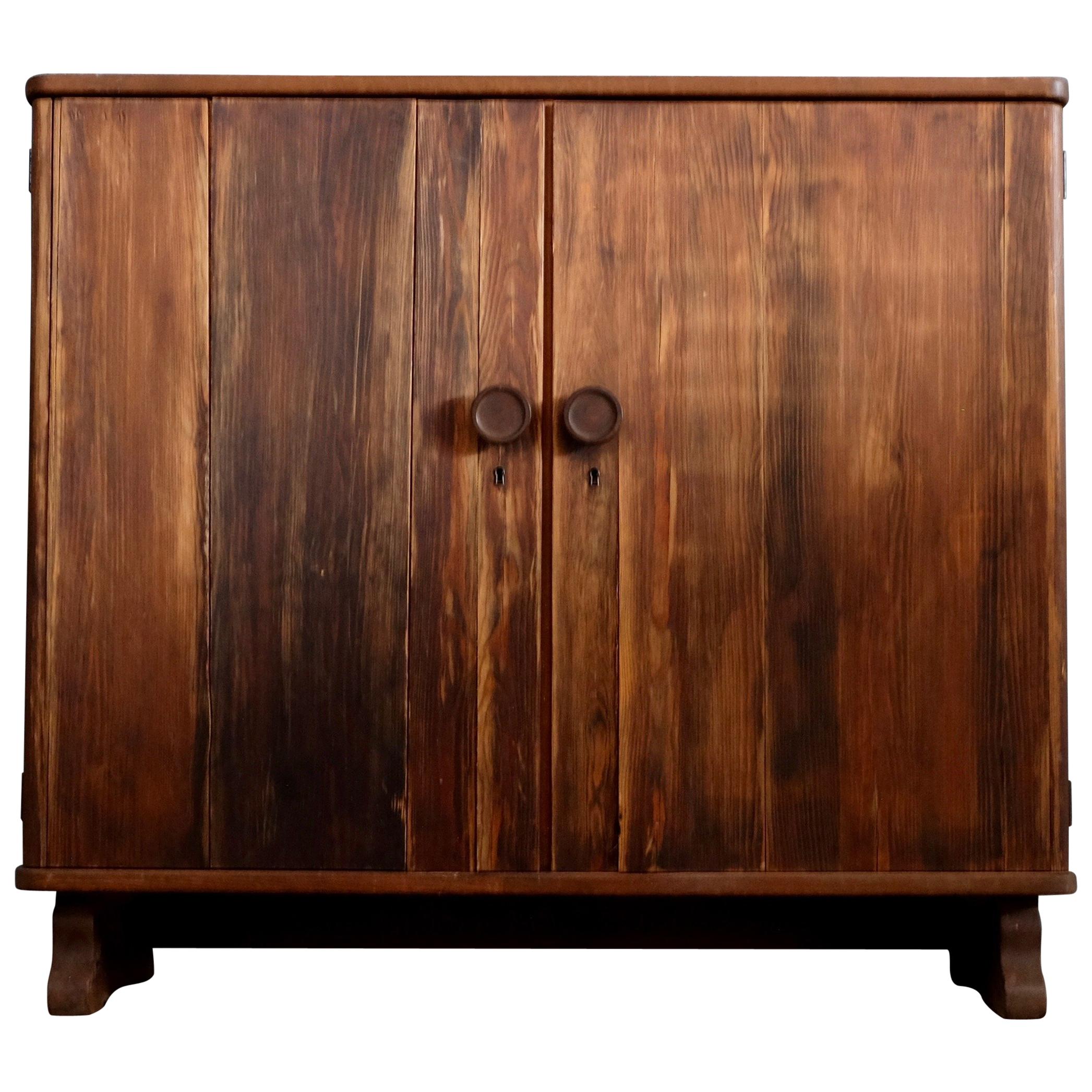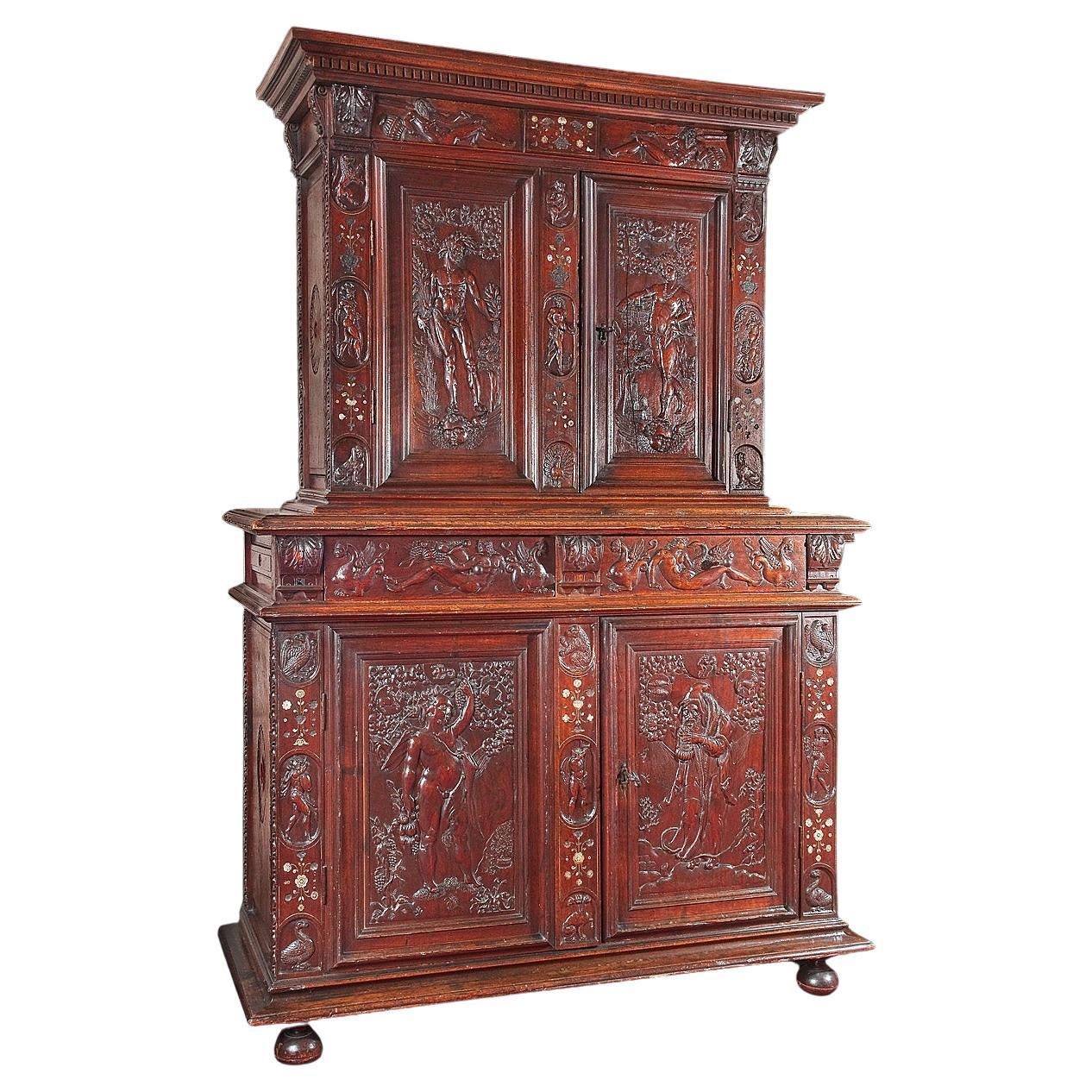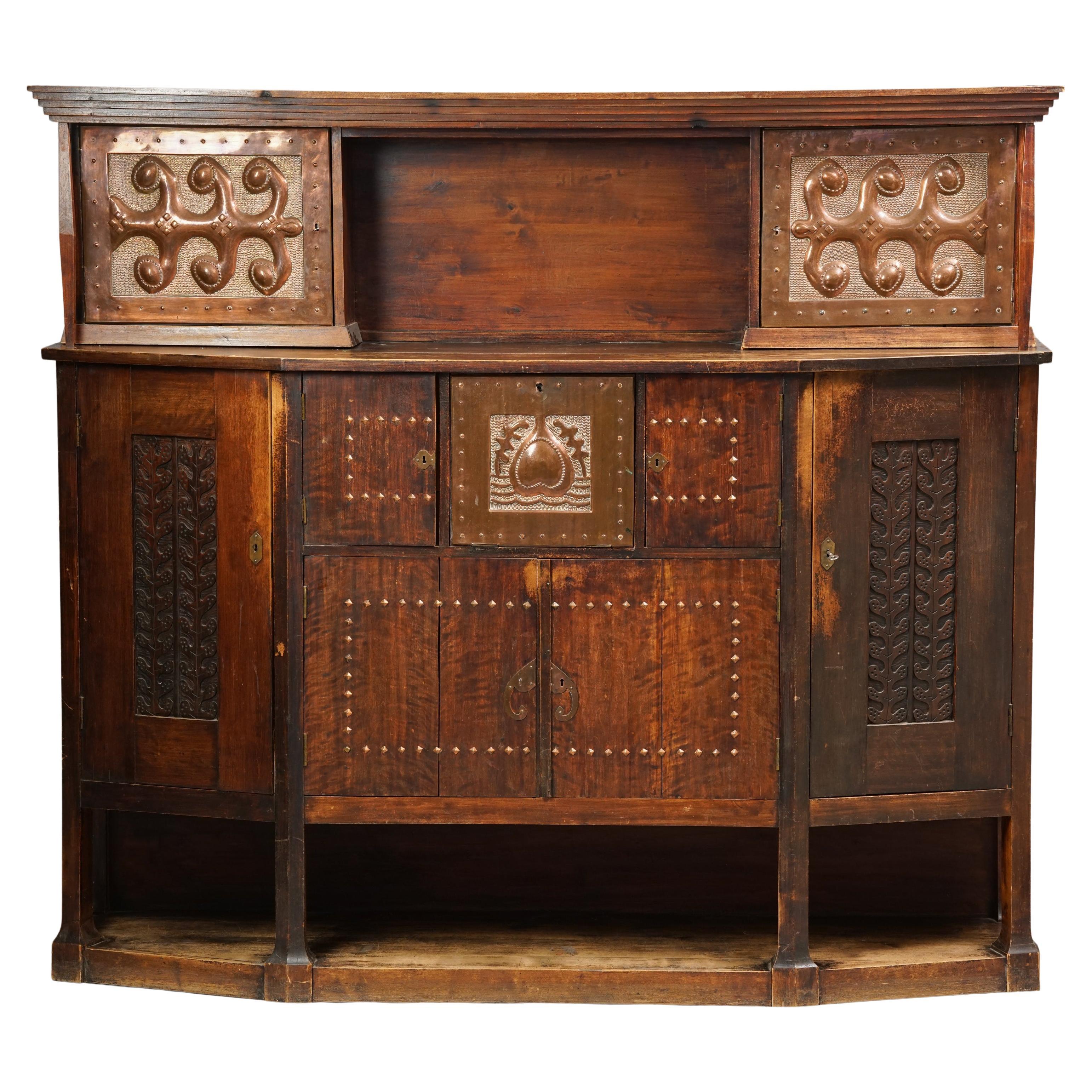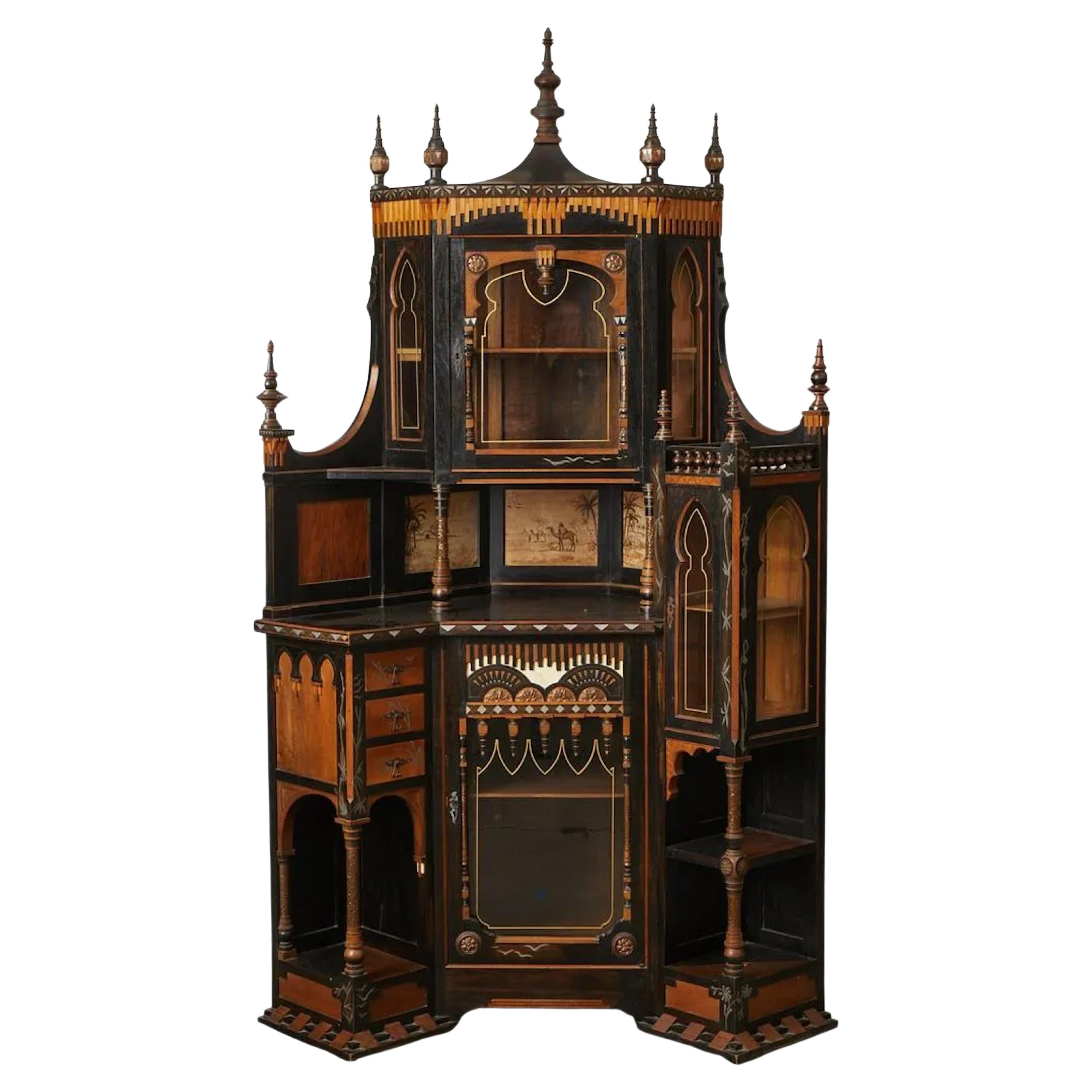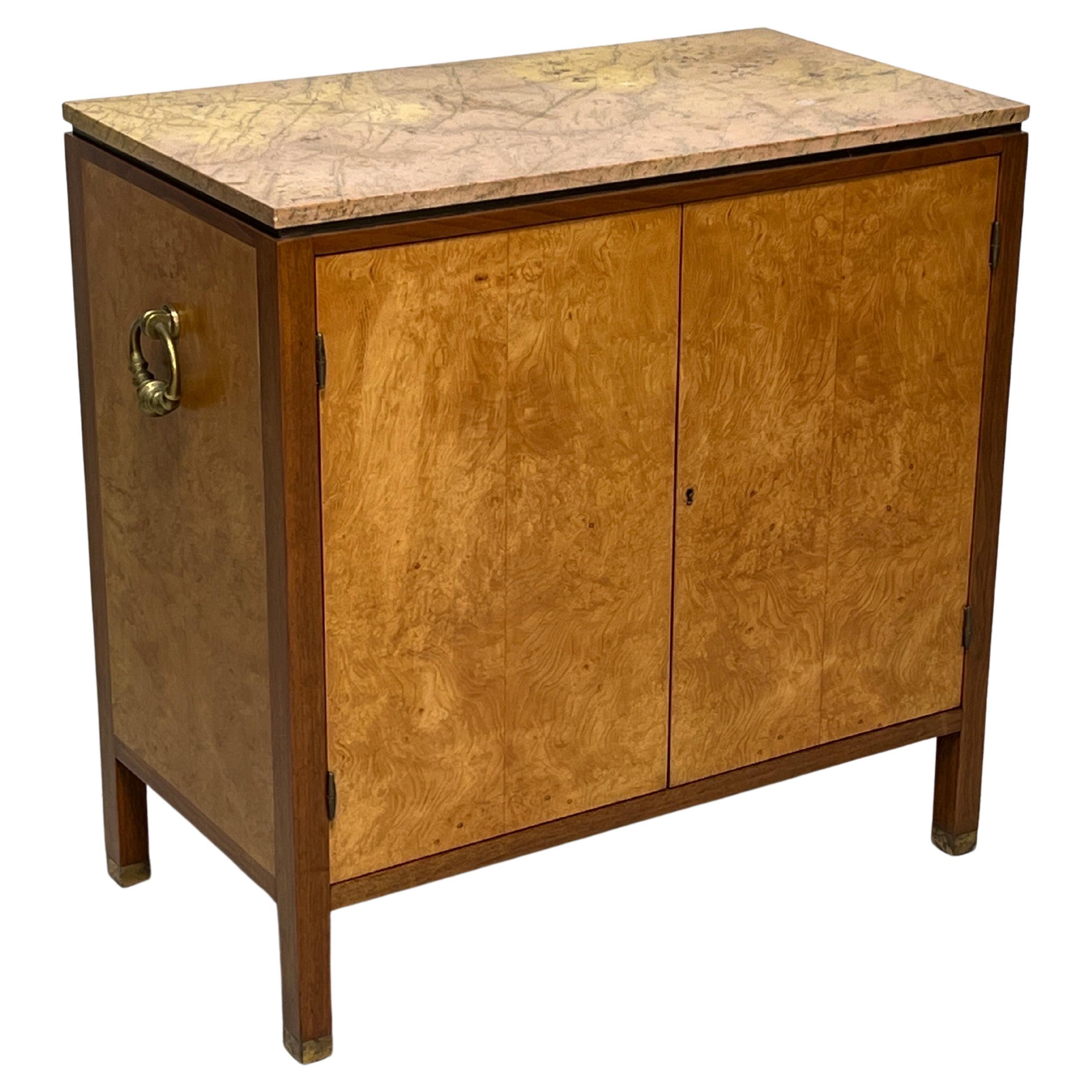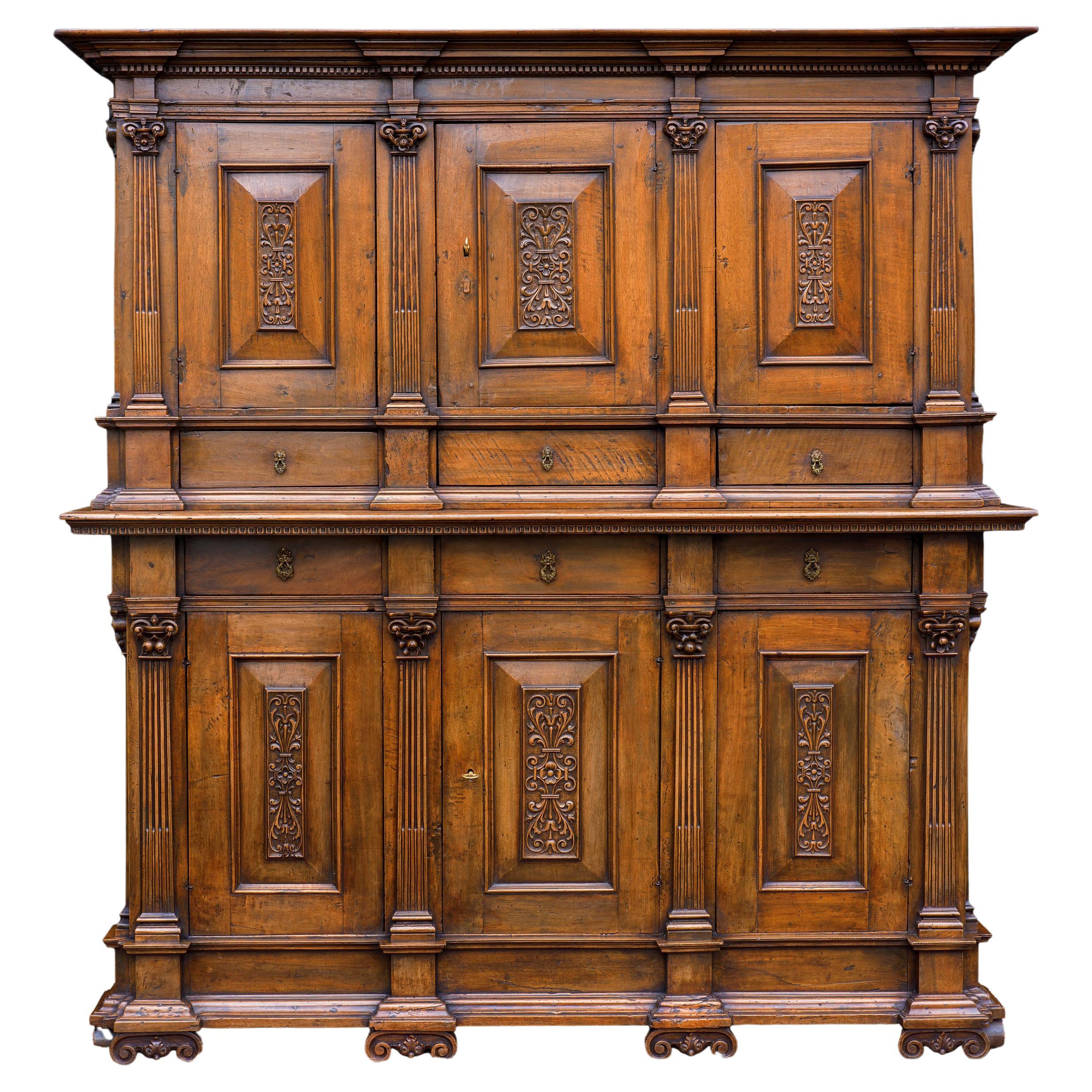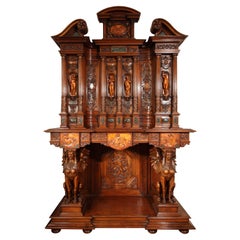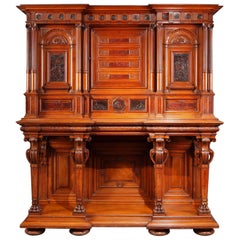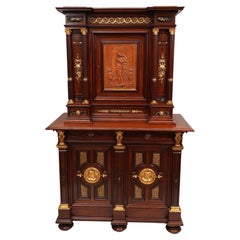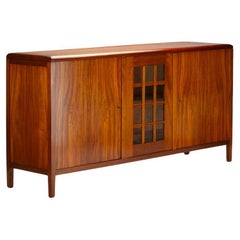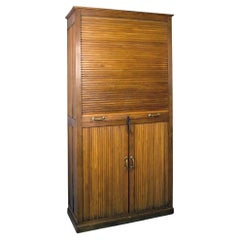
Rare Cabinet by Metgé
View Similar Items
Want more images or videos?
Request additional images or videos from the seller
1 of 10
Rare Cabinet by Metgé
About the Item
- Creator:Auguste Metgé (Cabinetmaker)
- Dimensions:Height: 40.16 in (102 cm)Width: 51.19 in (130 cm)Depth: 19.69 in (50 cm)
- Materials and Techniques:
- Place of Origin:
- Period:1910-1919
- Date of Manufacture:circa 1910
- Condition:
- Seller Location:PARIS, FR
- Reference Number:1stDibs: LU3860313515012
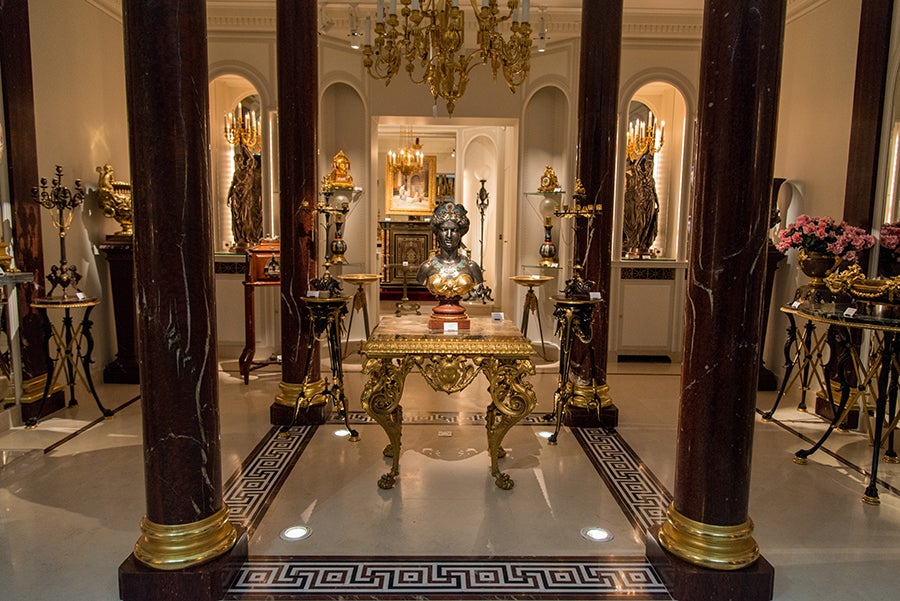
About the Seller
4.9
Vetted Seller
These experienced sellers undergo a comprehensive evaluation by our team of in-house experts.
Established in 1997
1stDibs seller since 2018
76 sales on 1stDibs
Associations
International Confederation of Art and Antique Dealers' Associations
More From This SellerView All
- Renaissance Style "Four Seasons" Cabinet by M. Lerolle, France, Circa 1890By LerolleLocated in PARIS, FRSigned " Meubles D’Art, M. Lerolle, Fabricant, 61, Rue des Sts-Peres. Paris " Remarkable carved wood cabinet, richly sculpted in the Neo-Renaissance style, and inlaid with vert de m...Category
Antique 1890s French Renaissance Revival Cabinets
MaterialsMarble
- Neo-Renaissance Cabinet by G.F. Quignon, Universal Exhibition of Paris 1889By Frederic Gustave QuignonLocated in PARIS, FRPresented at the Universal Exhibition of Paris in 1889 Important sculpted and engraved natural wood, patinated bronze and Griotte de Campan red marble inlaid Neo-Renaissance style cabinet. The upper part is composed of a frieze of bronze medallions separated by triglyphs and supported by ribbed columns with Corinthian capitals. There are eight of these columns paired at the front and two simple columns at the rear. The facade presents an alternation of bronzes in niches and cartouches, of marble slates in cartouches sometimes flanked by palmettes, and of engraved motives of laurel and foliage scrolls. The upper part opens with three leaves and three mobile compartments. The belt carved with acanthus leaves opens with two drawers. This cabinet is supported by four richly sculpted tapered feet ending with claws. Four fluted pilasters are inscribed in the moulded back as counterparts. The whole ensemble stands on a moulded plinth and eight rounded feet. Neo Renaissance Cabinet...Category
Antique 1880s French Renaissance Cabinets
MaterialsMarble, Bronze
- Neo-Renaissance Cabinet by P. Sormani and attr. to E. Lièvre, France, Circa 1870By Edouard Lievre, Paul SormaniLocated in PARIS, FRSigned twice on the lock P. SORMANI 10 rue Charlot Paris Rare neo-Renaissance cabinet in carved wood and Portor marble, adorned with chiseled and gilded bronze. The upper, part, surmounted by a frieze of posts and marble cabochons, consists of a central door decorated with a carved panel representing the birth of Venus, framed by two pairs of ringed and fluted columns with Corinthians capitals in gilded bronze revealing two doors with secret opening. Two drawers with lion’s head shaped handles and a central drawer decorated with tracery in gilded bronze complete the upper part of this cabinet. In the lower part, two drawers on the belt with diamond...Category
Antique 1870s French Renaissance Cabinets
MaterialsMarble, Bronze
- Louis XVI Style Cabinet and its Companion Vitrine by F.Linke, France, Circa 1890By François LinkeLocated in PARIS, FRExceptional Louis XVI style cabinet and its companion vitrine beautifully mounted with chiseled and gilded bronze. They are surmounted by a rectangular top with an egg-and-dart molded edge, above a frieze centered by a laurel-festooned Bacchic mask and scrolling acanthus. The vitrine and the cabinet open by one door ; the paneled door of the cabinet centered by a ribbon-suspended lyre and foliate pendant. Both have the angles adorned with tapering female caryatids, above a guilloche. They rest on tapering fluted quiver-form legs joined by a pierced stretcher, surmounted by a flowery urn, and ending on toupie feet. Related work : Cabinet and vitrine listed under index 684 of Linke’s photographic archives (see photo attached). View of a room of the private collector Elias Meyer’s Mansion, in 16 Grosvenor Square, London, taken in 1909 and reproduced and commented in François Linke (1855-1946), The Belle Epoque of French Furnitures, Ch. Payne, p.247) showing the cabinet and the showcase in situ. (see photo attached). View of the cabinet in situ in the Queen’s bedroom in the Palace Ras al-Tin, in Alexandria, after being bought by King of Egypt Fouad on March 1927. Reproduced and commented in François Linke (1855-1946), The Belle Epoque of French Furnitures, Ch. Payne, p.278. (see photo attached). François Linke, born in 1855 in Bohemia (Czechoslovakia), worked as a cabinet-maker in Paris from about 1882 until his death in 1946. In 1900, at the apex of his career, he opened a new shop at the famous Parisian place Vendôme. He specialized in Louis XV and Louis XVI style furniture: all pieces were beautifully mounted with gilt-bronze ornaments, and he received numerous commissions. Later Linke decided to collaborate with the well-known sculptor Léon Messagé and integrated new lines and shapes announcing the “Art Nouveau” style. His great success is definitely the 1900 Universal Exhibition where he was awarded the gold medal for his extraordinary kingwood desk, designed by Messagé. At this occasion, the “Revue artistique et industrielle” commented that “Linke’s stand...Category
Antique 1890s French Louis XVI Cabinets
MaterialsMarble, Bronze
$139,084 Sale Price / set31% Off - Renaissance Style Cabinet, France, Circa 1870Located in PARIS, FRAn outstanding carved cabinet in the Renaissance style. The upper part consists in two stages with arcades, divided in six compartments by rich columns with Corinthian capitals, and topped by a carved entablature. The lower part opens with three doors, ornated with masks, hybrid figures and foliates, and relies on four strong feet. This cabinet, probably executed for an amateur or a collector, is a perfect model for the neo-Renaissance style, that rose in the 1830’s, in France with the designers Claude-Aimé Chenavard (1798-1838) and Michel Liénard (1810-1870). It came some years after the Gothic Revival, but met a longer success during the 19th century (at the Expositions des Produits de l’industrie in 1844 and 1849, and at the Universal Exhibitions in 1855, 1867 and 1878). Inspiration was found in the French Renaissance, more specifically in the art of Henri II’s reign, and cabinet-makers used dark carved...Category
Antique 1870s French Renaissance Cabinets
MaterialsWood
- Exceptional Marquetry Cabinet Attributed to Susse Frères, France, Circa 1880By Susse FreresLocated in PARIS, FRBlackened wood side-cabinet attributed to Susse Frères, opening with a central cupboard door underlined with gilt bronze rods, flanked by two small onyx c...Category
Antique 1880s French Cabinets
MaterialsLapis Lazuli, Onyx, Marble, Brass, Bronze
You May Also Like
- Large Rare Fish Cabinet by James MontBy James MontLocated in New York, NYThis exquisite large cabinet is by James Mont. The cabinet is a beautiful cerused oak and has a slight trapezoidal shape. In the centre of the cabinet there is a wonderful fish medallion which when pushed the rotating door...Category
Vintage 1940s American Cabinets
MaterialsWood
- Rare cabinet by Francis Jourdain, circa 1923By Francis JourdainLocated in LAMBLORE, FRExotic wood and courbanil veneer. Very minimalist design for this beautifull modernist piece. Bibliography: -Francis Jourdain-un parcours moderne 1876-1958' travelling exhibition c...Category
Vintage 1920s French Art Deco Cabinets
MaterialsGlass, Wood
- Rare French Filing CabinetLocated in Los Angeles, CAThis oak cabinet has two compartments. The lower section has fixed shelves and the doors roll back horizontally. The upper compartment is divided in two parts with shelves which can ...Category
Vintage 1940s French Art Deco Cabinets
MaterialsOak
- Rare Danish Pine CabinetLocated in Long Island City, NYRare Danish Floating Pine Cabinet with brass handles and double-sided shelving.Category
20th Century Mid-Century Modern Cabinets
MaterialsPine
$3,500 - Rare Swedish Pine Cabinet, 1930sBy Otto SchulzLocated in Stockholm, SERare Swedish dark stained pine cabinet with wonderful patina. Designer unknown. Produced in Sweden, late 1930s. Locker with key in working condition.Category
Vintage 1930s Swedish Scandinavian Modern Cabinets
MaterialsPine
- Rare Renaissance Cabinet Richly CarvedLocated in Saint-Ouen, FRThis rare Renaissance cabinet is richly decorated on the doors and drawers with carvings depicting the four seasons, and on the uprights and the entablature, alternating flower bouquets inlaid with mother of pearl. This is a beautifully conceived piece of furniture, representing a crowned portico with its entablature and cornice. The upper body Articulated separately in a ternary rhythm, as with the lower body, the upper part opens with two carved doors. The doors are framed by both the lateral uprights and the casing. There are cartouches carved into the casing in which mythological figures are depicted with flower bouquets. On the doors: On the right: Spring, a female figure crowned with a wreath of leaves, holding a basket full of flowers. She is wearing necklaces and bracelets on each arm, with drapery discretely wrapped around her body and is standing on a winged putti’s head. On each side are depicted a tree and a village with a steepled church. Above her head floats the three signs of the zodiac corresponding to the season: Aries, Taurus and Gemini. On the left: Summer, a bearded man crowned with ears of corn and bearing armfuls of corn. He is standing on a similar winged putti, flanked by a tree and an ear of corn. The following three signs of the zodiac appear: Cancer, Leo and Virgo. On the uprights and the central casing a number of smaller figures seem to represent virtues and vices that newly wedded couples should aspire to and avoid. On each side, at the bottom of the uprights, there is a dog representing fidelity. Above, a lion embodies power, wisdom, and justice. In between, on the left upright, there is a figure of noncombatant Athena wearing a helmet and holding a spear, an arrow pointing down and in her left hand, a shield, symbol of protective power. On the right upright, the goddess Venus controls the arrow of Cupid. The iconography here acts as a clear reminder of the required virtues that both parts of a young couple need to fulfill: fidelity, power, wisdom and justice. For him, the goddess Athena focuses on the power. Whereas for her, it is Venus who shows how to control Cupid’s arrow. On the central casing at the bottom, by way of contrast, there is a peacock, a symbol of pride and at the top, a monkey representing lust and mischief. In between, a woman holding a chain and a cup full of precious stones while on the floor sits a half empty opened casket. This can be interpreted as a symbol of extravagance. Above, the entablature, decorated with male figures resting on leaking urns, may symbolize the passing of time. They are flanked by two consoles decorated with acanthus leaves and separated by flower bouquets (inlaid with mother of pearl). Finally on top, a cornice acts as a crown for the piece of furniture. The lower body The moulded base stands on four round, flattened feet. Represented on the doors: On the left: Autumn, a stocky, naked man crowned with vine leaves, holding fruits in his right hand and with his left, picking a bunch of grapes from a climbing vine. Standing on a mound, he is surrounded by a vine and a hill, at the foot of which a man presses the grapes in a big vat after the harvest. Above the climbing vine appear the signs of Libra, Scorpio and Sagittarius. On the right: Winter, an elderly man wearing a fur cloak...Category
Antique 16th Century French Renaissance Cabinets
MaterialsWalnut
